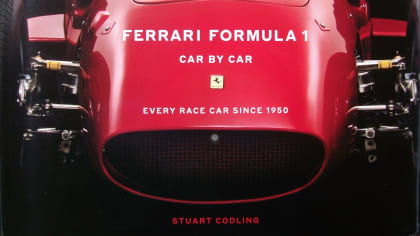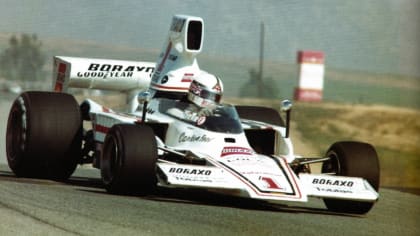Freddie Ludlow, His Life On Two Wheels
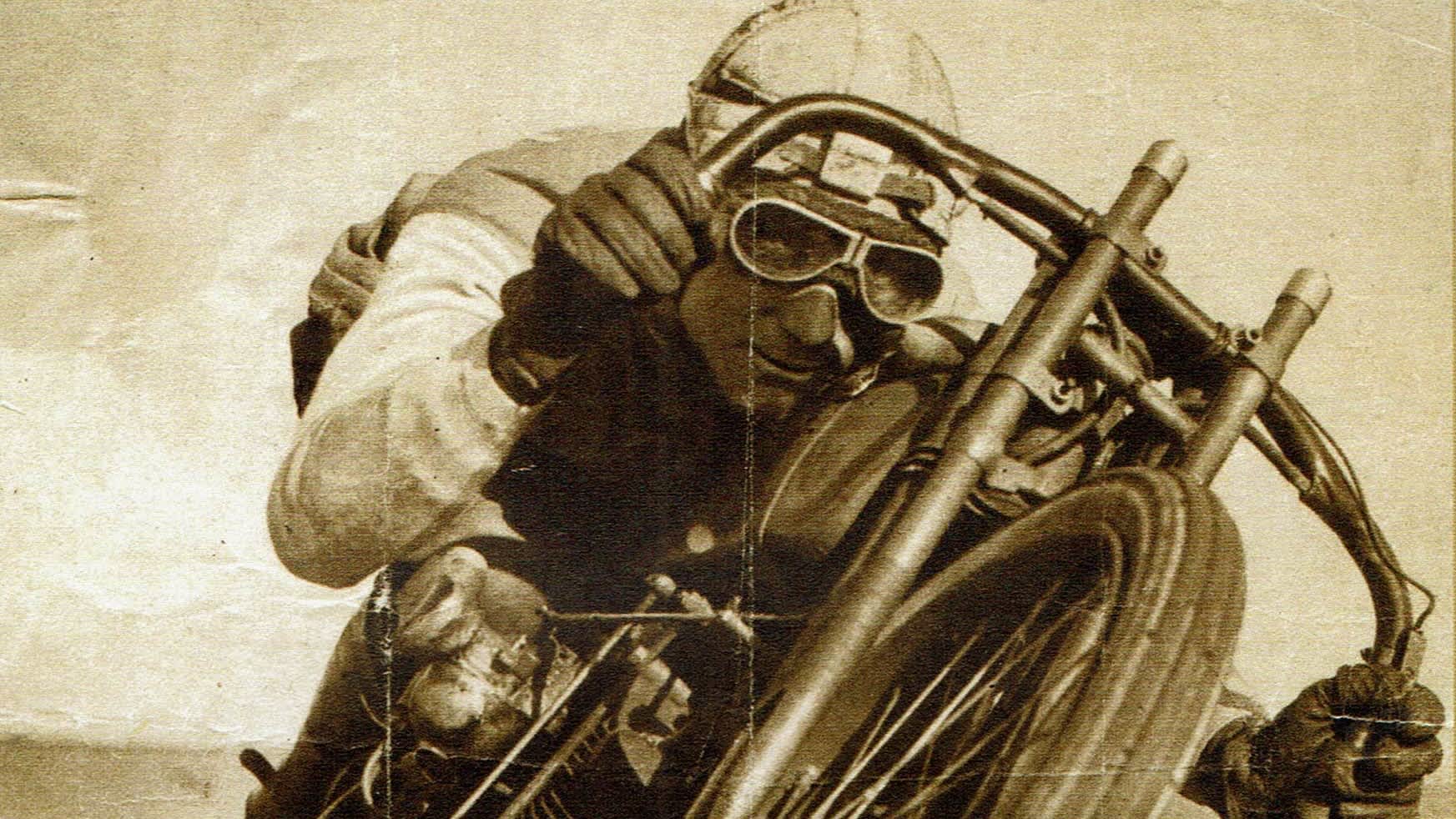
Book Review of Don Emde's Biography Of Freddie Ludlow
A book about Freddie Ludlow - his career in racing, military service, and as an officer in South Pasadena - nicely written by accomplished author Don Emde.
By Doug Stokes
Mon, Dec 6, 2021 06:10 PM PST
Book Author: Don Emde
176 Pages -10 x12 inches - Hardbound
400+ photos and related images
$45.00 US
Published by: Emde Books, USA
ISBN number: 978-0-9972720-2-4
Available at: EmdeBooks.com
If you’re the kind of visitor to LACar who actually reads book reviews from the top down, above you’ve very likely noticed that this new book has (over) four hundred "photos and related images" included in it’s 176 horizontal (10 by 12 inches) scrapbook-style pages, and very likely expect that the story of Freddie Ludlow is here quite well-illustrated.
… It is
But you should also know that the story - here told by motor historian Don Emde - about this remarkable man is every bit as detailed and colorful as the carefully preserved and beautifully presented photos and papers of the title character Fred William Ludlow. Mr. Ludlow's "official" name, by the way, became "Freddy" at an early age and rode with him until his passing in 1983 at age 87.
Freddy became a national motorcycle racing champion shortly thereafter, served in the Army during the First World War as a motorcycle dispatch rider, came home to even greater achievements on racetracks across America. When he retired from the track he gave up that danger-filled profession for an even more fraught one, big-city motorcycle cop.
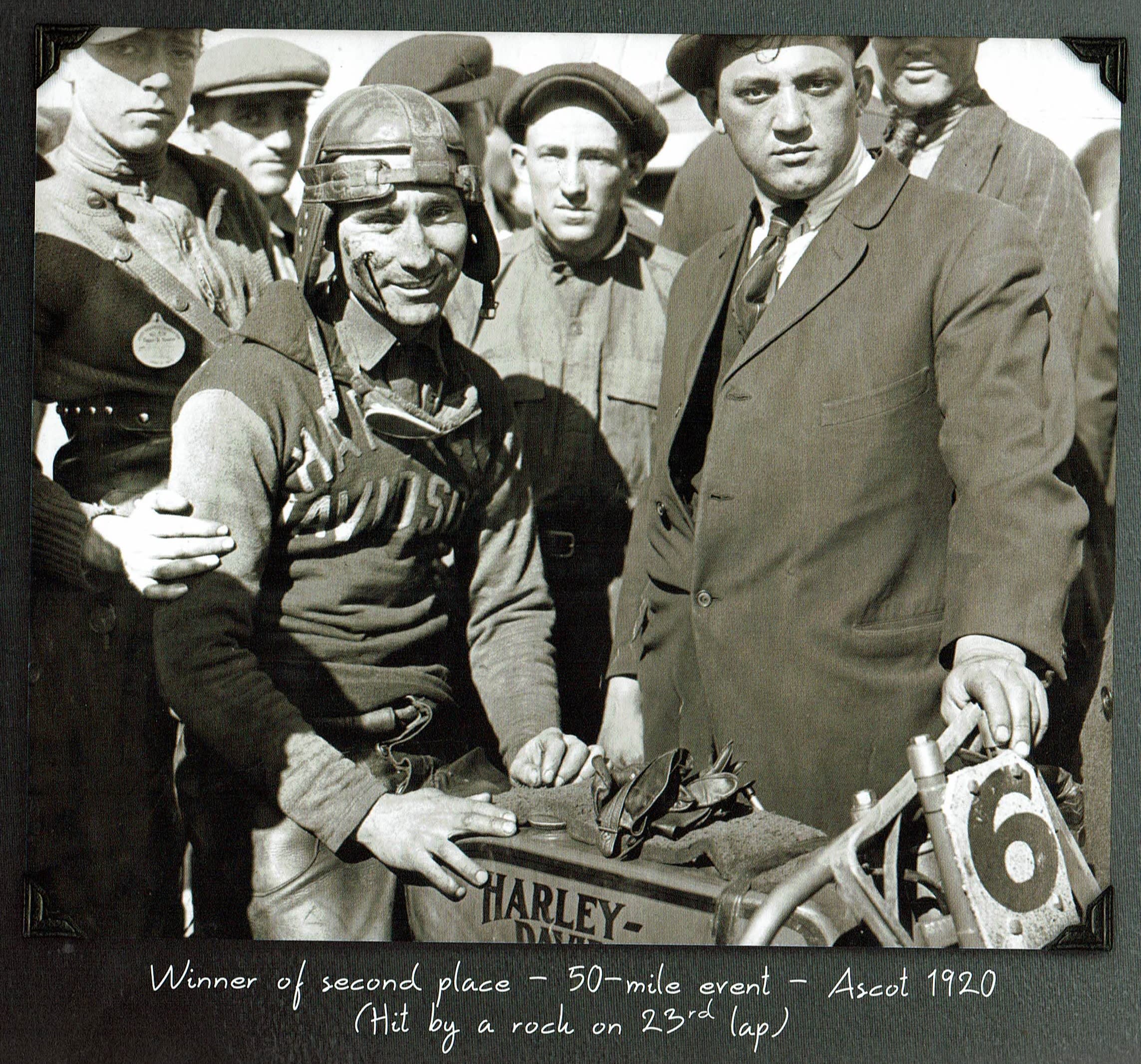
Fred Ludlow's Early Life
Born in Los Angeles in 1893, by age 13 he was a high school dropout working as a Western Union motorcycle courier. Soon thereafter he started racing, of course. In 1913, riding in practice at the incredible mile-long circular board track at Playa del Rey, he caught the eye of Indian Motorcycle team rider Charles Balke who had looked back and saw Ludlow staying fairly close behind on the steeply-banked track. When both were back in the pits, Balke asked the youngster if he’d ever ridden a big base eight-valve like his factory mount. Ludlow said that he had not.
Only shortly before this encounter, Lee Humiston, on an Excelsior motorcycle had run the one-mile in 36 seconds for a 100 mile per hour average speed. Ludlow’s best time on Blake’s "big" Indian was 37.75 seconds on a motorcycle that he had only seen whiz by him on the track just shortly before. Almost as so many old racing films have it, Ludlow became Balke’s mechanic, thus putting him into the big time, where the inevitable was bound to happen.
By 1915 Ludlow was riding for Indian and making marks for the brand, like being the first of that brand across the line in the 300 mile Venice Grand Prix, taking a strong 5th place behind two Harleys and two Excelsiors on his Indian which was running an engine that he had built himself.
Ludlow Serving - On A Motorcycle
Perhaps one of the most charming aspects of this book is the inclusion of a number of short pieces that Ludlow wrote about his life and adventures. These really add depth and focus to a picture of a person who was really living life to the fullest.
In June of 1917, Ludlow enlisted in the Army and shortly thereafter was assigned to an Army Signal Corps unit that was being trained to use motorcycles equipped with sidecars. Years later, in an article he wrote for the January 1936 edition of "The Motorcyclist" he wrote that the idea behind his unit was to: "… give Uncle Sam an efficient group of men who knew how to twist a throttle and who could do things on a motorcycle that aren’t done on a horse or a tank." His notation was correct.
A bit further on, Ludlow - becoming something of a war correspondent attached to a mission - relates a little war story of a night mission:
"Off we went, We took the right fork. It was dusk and we were riding without lights. I thought I saw flashes. I shut off and coasted and knew darned well I heard cannon fire. Finally some fellows showed up alongside the road and flagged us down. One English-speaking member of the crowd asked us where we were going. I told him to Chateau-Thierry. He said, ‘Fine, only you are on the wrong road. You are now in the second line trenches. The first line is just ahead. Another half mile and you will be in Germany.’ The foregoing covers some of the comedy which was ever present during the war. Aside from that there was a decidedly serious side of things."
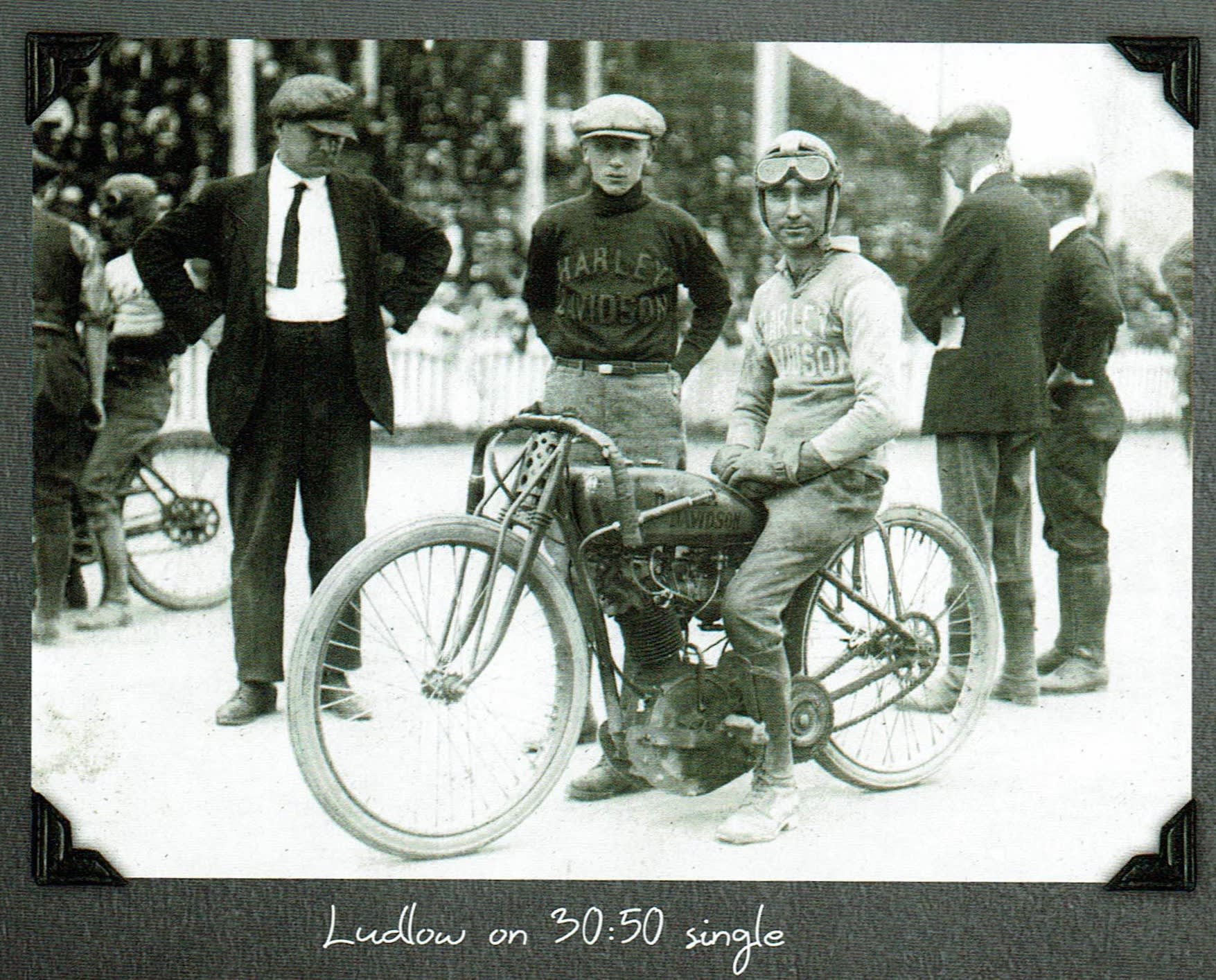
Fred Ludlow's Racing Career
Back home after the "war that would end all wars" Ludlow was very quickly back in the saddle - as motorcycle seats were called early-on. He was winning races, setting records, and avoiding finding himself in the place that racing writer Joe Scalzo rather glibly referred to as "the stone orchard" - where many of his race-riding contemporaries ended up (aka "the graveyard").
Off of a smoking hot motorcycle and away from the track, Ludlow personally was pleasant and never seemed to belie the tiger that he became when he was mounted up and riding hard. Virtually every photo in this book of the man (and there are many) sees him looking into the lens with a wry smile. It’s friendly, honest, earnest, and shows just a hint of his pride in what he could do with a motorcycle.
Officer Ludlow
Ludlow raced motorcycles across the United States from the treacherous west coast Board Tracks, through commandeered cornfields in Iowa, the hard-packed sand of Daytona Beach, and half a hundred (more?) tracks in between. Bowing out of active competition in 1922, Ludlow took a job that seemed fairly suited to him. He joined the South Pasadena (just outside downtown LA) Police Department as a motor patrol officer - thus trading one form of danger for another, but staying on two wheels while doing it. He had quit riding in wheel-to-wheel competition, but that did not stop him from going after (and setting) all sorts of new motorcycle speed records in his off-duty hours.
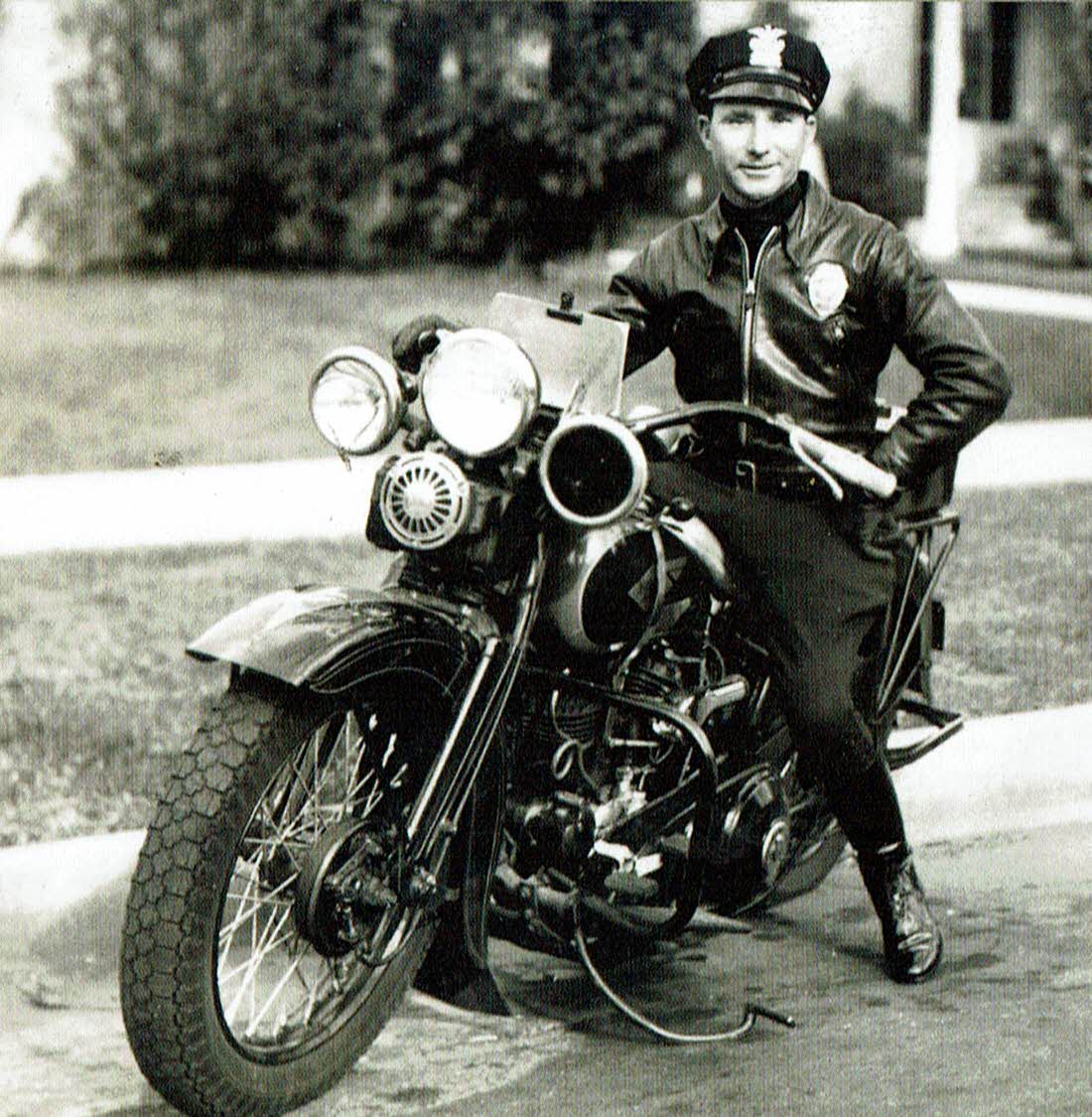
In his day motor officers were almost universally referred to by the public as “Speed Cops” because they were the only police vehicles (as the silver screen often showed us) capable of chasing down really fast automobiles. With Officer Ludlow that moniker worked both ways.
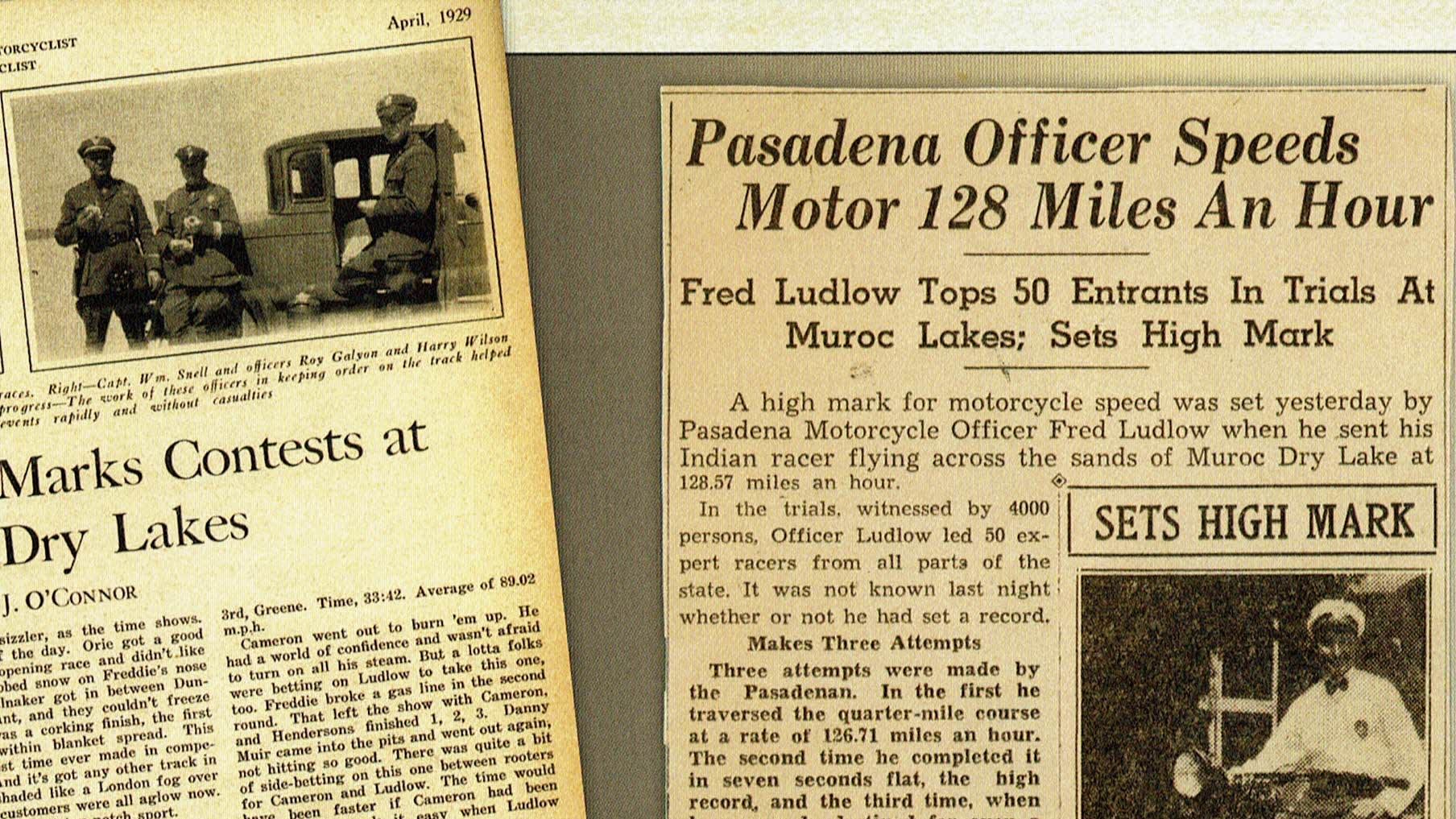
About The Book (And An Era)
And as good as this story is, and as well as it’s told … the book itself is a true work of expert design. The warm tan pages and the sepia tone photos transport the reader back to the day, the hour, the minute with great ease. One does not have to be a motorcycle racing historian to really "get" what’s going on here. This book is easy to understand - it’s all about a bygone era in motorcycle racing that was far more heroic than commercial.
That’s not to say that the motorcycle brands: Excelsior, Indian, Henderson, and Harley-Davidson didn’t go at each other with full-on fury, but the riders where the show in those (only slightly) less commercial days. As well-known to fans as any of today’s top competitors (and better in most case), these riders where always in the news, and Emde’s inclusion of numerous examples of the (oft fanatical) press of the day gives form to the circumstance in this book.
Of course the hype was helped greatly in those days with the running of jaw-dropping (even now) motorcycle races. Races that ran from Los Angeles to San Francisco and back again, for example. As well as events at local tracks, like the first iteration of one of LA’s most recognizable speed joints - Ascot Speedway - just east of downtown Los Angeles.
Book Review - Summary
Great stories about historic figures, like Freddie Ludlow, really don’t need endless pages of dry facts and figures or droning text - and this book is good proof of that theory. Emde’s writing style is clean, interesting, and intentionally accurate. Interestingly - and, I think, quite intentionally as well - a lot of the warmth of the story is told in Ludlow’s own words. His smile is genuine. And so is mine, after learning about the man and his times here.
Author Don Emde, a champion motorcycle rider of a later age himself, has here reconstructed Ludlow’s life with great care and some very detailed writing about Ludlow and his enduring passion for those noisy, unstable, open to the weather, motor between your knees, two-wheeled chariots that speak so loudly to some that they often, and with full foreknowledge, cast reason and personal safety aside just to be part of the process.
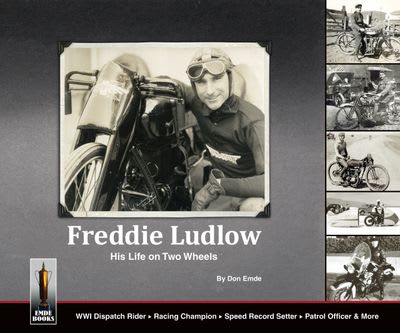
This book could easily be sub-titled, "...Some 20 Years in the Making" because that’s how long ago Emde was given a copy of Ludlow’s amazing personal scrapbook. One might think that he had taken his time getting around to making it the backbone of this remarkable book, and that’s true. But he had other books to finish first, including his award-winning "The Speed Kings" (2020 [Motor Press Guild – Dean Batchelor Awards - Book of the Year 2020]) which brought the great - and even more dangerous - days of board track speedway motorcycle racing alive. That book - with its motorcycles stripped to bare bones, devoid of brakes, and lapping giant wooden bowl-shaped, mile-long "Speedromes" at velocities that some airplanes of the day could not make - leaves off where "Ludlow" kicks its starter, and snaps into gear.
One more thing: there’s a good index and a very good bibliography here, just in case knowing more about the man and the era has become a quest. There’s also a very interesting preface where author Emde not only explains why he wrote this book, but also how he did it in good detail. For me it’s something of a mini-master class in the subject, and explains not only the process, but the thinking and the teamwork that produced a first class example of the genre. In fact, anyone who has ever heard: "...You should write a book" and thought (even for a moment): "Hmmmmm…", should really take notes here.
Approval To Leaf Through
This author (and LACar as well) hereby indicates that it is perfectly normal (and very OK) to simply turn the pages of this book and soak in the atmosphere of flying dirt and smoldering rubber … Yeah, that’s castor oil you smell too. And those bikes … scrawny frames, tires that would look slender on a kid’s bike, and (sometimes) helmets that were more to keep the pomade in one’s hair than for protection. Perfectly OK for the reader to get their eyes filled up with all the wonderful vintage images here. After that, settle back and let Don Emde’s narration transport you to the days of yore (that really weren’t all that long ago) when motorbikes came of age.
About The Author - Don Emde
Author Don Emde comes from a family that has been involved in the motorcycle sport and industry for over a century. He’s a lifelong collector of motorcycle history material and the majority of the reference material for this book came from his own extensive collection. In his younger years, Emde was a professional motorcycle racer competing in the AMA Grand National Championship series, and later in international competition. He and his father, Floyd Emde are the only father and son to have both won the prestigious Daytona 200 roadrace. Don's late-brother David was the 1977 AMA 250cc National Champion.
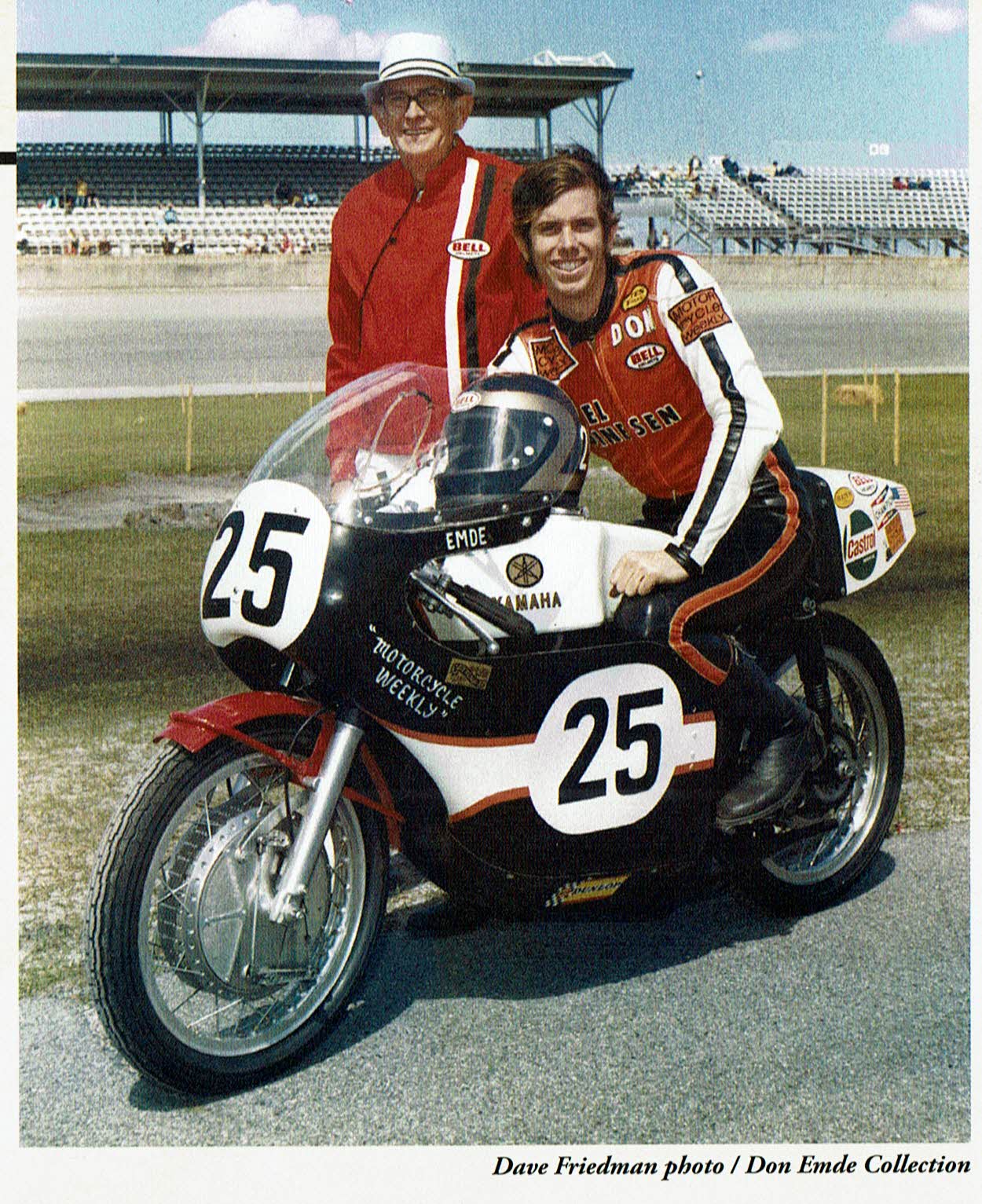
After retiring from racing, Don worked in the motorcycle industry until starting a business in 1990 that is still operating today, publishing motorcycle history books and trade magazines. He is also President of the Trailblazers Motorcycle Club, Inc., a 501(c)(3) non-profit organization that has been in operation since 1940. Emde lives in Laguna Niguel, California with his wife of 49 years, Tracy. They have two children, Jeffrey and Jennifer, three grandsons and one great-grandson.
Other Books by Don Emde
The Daytona 200 - The History of America’s Premier Motorcycle Race
Legends - The BMW Battle of the Legends 1992-1996
Finding Cannon Ball's Trail
The Speed Kings - The Rise and Fall of Motordrome Racing
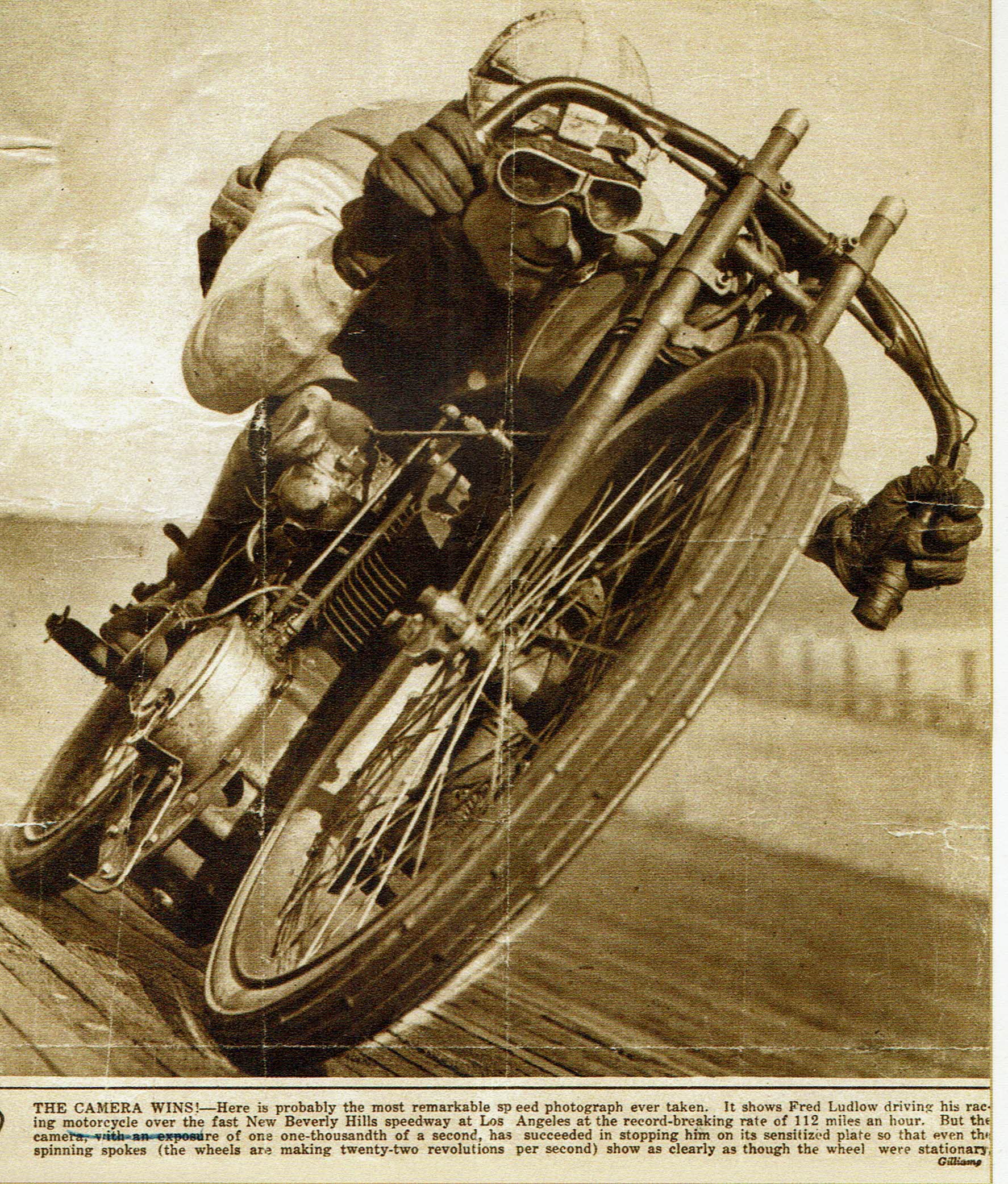
In His Own Words... (Ludlow's That Is)
Much has been written about racing in America between the years of 1911 and 1929, but to the best of my knowledge, there are still to be heralded some of the factors which operated behind the scenes. As it may be of help and interest to present day riders, I would like to bring out, if possible, the elements of teamwork, the knowledge of mechanics, the versatility of the riders and the broadness of their training during the period I have mentioned.
In those days a rider, whether he be a National champion or just a member of a factory team, had to be ready to jump from a hard surfaced track to a soft one. He had to ride in dust so thick he could not see the rider ahead of him. One race might be one lap on a mile and the next might be 300 miles. Following that he might be called upon to ride at Daytona Beach for a speed record.
Through it all he had to strive for teamwork, employing the tricks of the trade, not only to bring for himself a victory which was expected of him by fans and his factory alike, but he had to conspire to bring through his teammates. It was like modern football. There was no place for straight sensational riding. In those days there was no demand for grandstanding. You were expected to fit into a general program, and you were trained to do it on dirt, sand or boards.
- Fred Ludlow
written for a magazine article in 1935
In those first lines above, Ludlow seems to be hinting at Don Emde putting this amazingly enthusiastic story together some 75 years after he wrote them… WOW!
About The Author
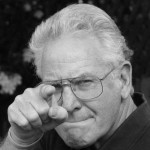
Doug has a long and wide-ranging history in the motoring business. He served five years as the Executive Director of the International Kart Federation, and was the PR guy for the Mickey Thompson's Off-Road Championship Gran Prix. He worked racing PR for both Honda and Suzuki and was a senior PR person on the first Los Angeles (Vintage) Grand Prix. He was also the first PR Manager for Perris Auto Speedway, and spent over 20 years as the VP of Communications at Irwindale Speedway. Stokes is the recipient of the American Autowriters and Broadcaster’s 2005 Chapman Award for Excellence in Public Relations and was honored in 2015 by the Motor Press Guild with their Dean Batchelor Lifetime Achievement Award. 2025 saw Stokes voted into the Go Kart Hall of Fame. “… I’ve also been reviewing automobiles and books for over 20 years, and really enjoy my LACar assignments.” he added.


